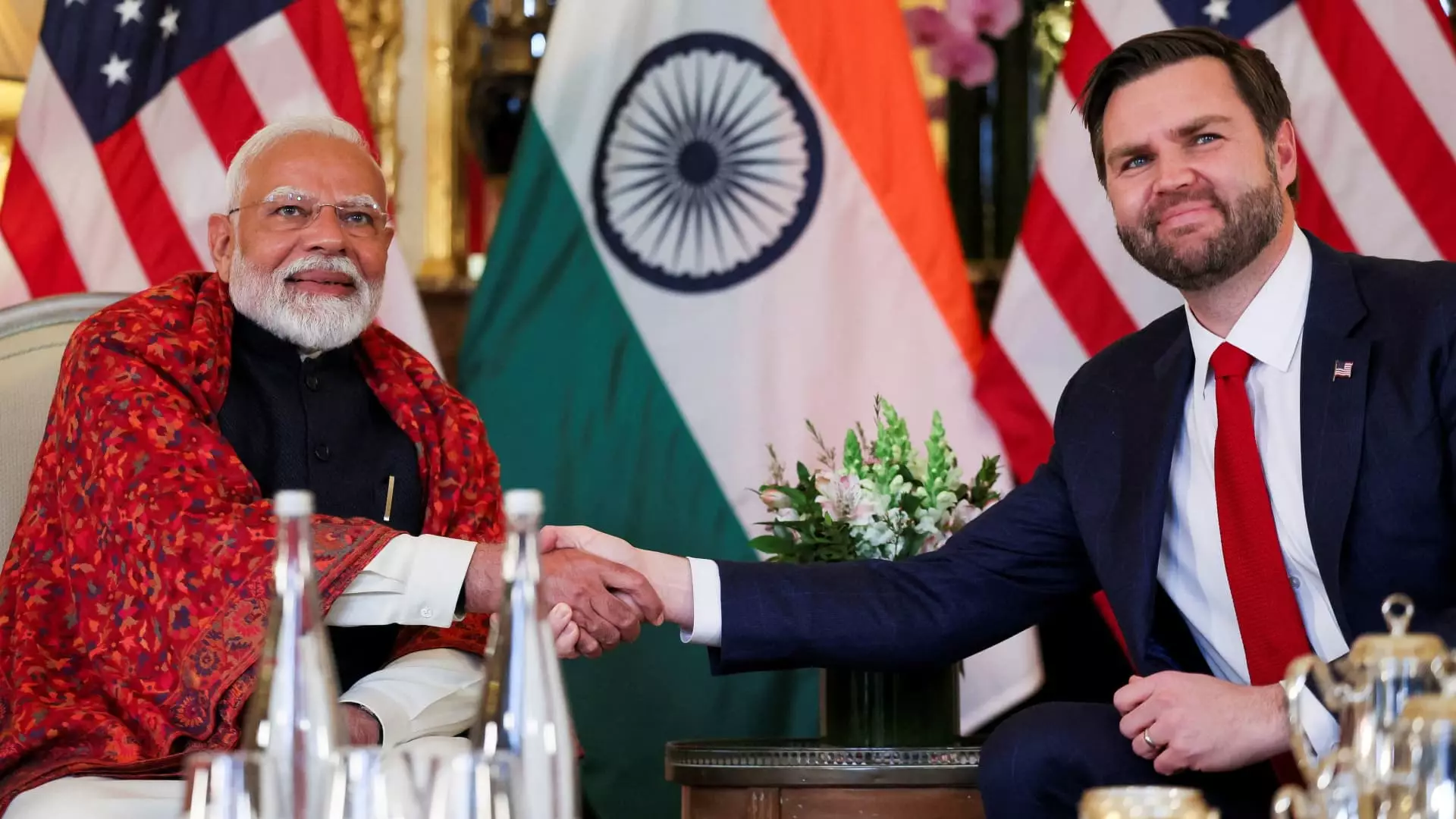Vice President JD Vance’s impending four-day journey to India is not merely a diplomatic formality; it symbolizes a pivotal moment for both nations in a rapidly evolving global economic landscape. With tensions heightening between the U.S. and China, Vance’s visit arrives at a time when India, an emerging economic powerhouse, stands poised to unlock vast opportunities for collaboration. This is an opportune moment for Vance and the Trump administration to solidify economic ties with a country that not only poses a strategic counterweight to China but also serves as a lucrative market for American goods.
The latest statistics show that the United States and India are already engaged in a substantial trade partnership valued at around $190 billion. The President’s administration has set ambitious goals to double this figure to an astounding $500 billion by 2030. However, it isn’t just numbers that matter; the implications of this visit reach far beyond mere economics, enveloping geopolitical strategies and mutual cooperation.
Strategic Ally in a Turbulent Region
The evolving geopolitical landscape makes India’s role critical in U.S. foreign strategy. Both nations share a mutual interest in countering China’s rising influence in the Indo-Pacific region—a crucial focal point that has far-reaching implications for global power dynamics. Being part of the Quad alliance, which includes Japan and Australia, India is viewed as an essential partner for the U.S. in maintaining the balance of power in Asia.
This alliance is vital as the Biden administration seeks to recalibrate U.S. foreign policy with an emphasis on coalition-building in the face of authoritarian challenges. With Vance’s visit, there lies an opportunity for not just economic discussions but also a commitment to cooperative defense and security policies. The stakes couldn’t be higher: the efficacy of this partnership could not only define the bilateral relationship but also stabilize the wider region amidst China’s assertive diplomatic maneuvers.
Cultural Connectivity and Personal Stories
What adds an intriguing layer to this visit is Vice President Vance’s personal connection to India through his wife, Usha Vance. As the child of Indian immigrants, Usha brings a unique perspective to the table, enhancing the cultural ties between the two nations. This connection exemplifies the idea that diplomacy often transcends political dialogues. When representatives bring their individual stories into their work, it fosters a deeper understanding that is pivotal for long-term partnerships.
Their family travel itinerary, which includes stops in culturally rich cities like Jaipur and Agra, signals that the Vances recognize the importance of cultural diplomacy alongside political and economic negotiations. By embracing this aspect, Vance may pave the way for a more holistic and human-centered approach in strengthening ties with India.
Challenges Looming Ahead
Despite the promising backdrop and shared interests, numerous challenges loom large ahead of Vance’s visit. Currently, the U.S. administration is navigating through a series of reciprocal tariffs that could significantly damage various sectors of the Indian economy, including agriculture and manufacturing. Modi’s government must tread carefully, balancing the need for trade expansion while protecting domestic interests.
Moreover, the Biden administration seeks greater access to Indian markets for its agricultural products, an aspect that’s proving contentious. Given that a significant portion of India’s workforce is tied to the farming sector, Modi’s willingness to compromise on this front will be a critical test of his leadership. It could symbolize either a binding commitment to U.S.-India collaborations or a setback that may hinder future negotiations.
Political Implications: A Balancing Act
The political implications of this visit stretch beyond economic assessments; they touch on the core of American identity and values. Here, Vance has a golden opportunity to advocate for a vision of the U.S. as a collaborative partner rather than an intrusive hegemon. To succeed, he must define a framework that emphasizes mutual respect and shared growth, devoid of neo-imperialist tendencies.
Both countries have stakeholders that may resist these changes, wary of the shifting power dynamics. However, Vance’s leadership could catalyze a shift toward a more progressive dialogue that embraces collaboration over competition. The development of robust ties with India may redefine U.S. strategic interests, moving away from unilateral actions to a collaborative approach, considering the multiple benefits that arise from shared prosperity.
As Vance embarks on this pivotal mission, one cannot help but feel the weight of expectation—not just politically, but socially and culturally. The world is watching, and the outcomes of these discussions could leave a lasting impact on both nations and their roles on the global stage.

